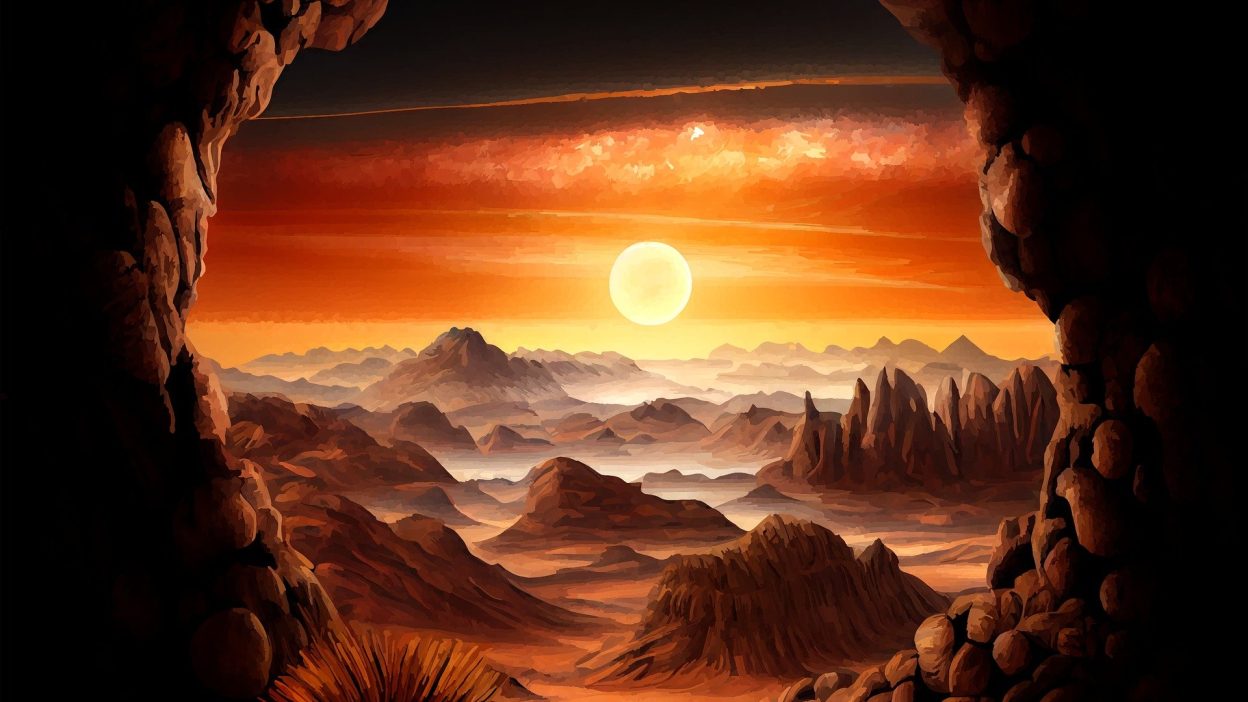The Sun is the ultimate source of life on Earth
One day, it will also bring our planet to its end. This blog explores how the Sun’s natural expansion will eventually push Earth out of the habitable zone, making survival impossible. Could Mars become humanity’s next home? Read on to discover the science behind our planet’s future.
Have you ever wondered how the world will end? It’s a thought that crosses many minds, and science has a fascinating answer. While doomsday scenarios often involve asteroids, nuclear wars, or climate disasters, the real threat lies in the very thing that sustains us—the Sun.
The Sun, which has been shining for 4.6 billion years, will continue to evolve, and in doing so, it will drastically change life on Earth. This article explores how the Sun’s transformation will ultimately push our planet out of its habitable zone and whether humans can find a way to survive elsewhere.
How the Sun Sustains Life on Earth
The Sun plays a crucial role in maintaining life on our planet. It provides light, warmth, and energy—all necessary for survival. It also powers natural processes such as:
- Weather Patterns: The Sun heats the Earth’s surface, driving rainfall, winds, and ocean currents. Without it, rain wouldn’t form, and Earth’s climate would collapse.
- Photosynthesis: Plants rely on sunlight to produce oxygen and energy, forming the foundation of the food chain.
- Climate Balance: The Sun’s energy keeps temperatures within a range that supports life, thanks to a delicate balance between solar radiation and atmospheric gases.
However, this balance will not last forever. The Sun is constantly changing, and its evolution will bring catastrophic consequences for Earth.
The Sun’s Expansion: Earth’s Future at Risk
Like all stars, the Sun is undergoing a slow but steady transformation. It burns hydrogen at its core, and as this fuel depletes, it expands. This process happens over billions of years, but its effects are inevitable.
Phase 1: The Sun Grows
- Even a 5% increase in the Sun’s size would make Earth significantly hotter.
- Oceans would evaporate at a faster rate, leading to extreme climate changes.
- The habitable zone—the region where liquid water can exist—would shift further away from the Sun.
Phase 2: Earth Becomes Uninhabitable
- When the Sun expands by 10%, Earth will move too close to the star.
- Oceans will boil, and the surface will become a scorched wasteland.
- Oxygen levels will drop, making the air unbreathable.
- Earth will resemble Venus, where intense heat and pressure make survival impossible.
Phase 3: The Sun Becomes a Red Giant
- Eventually, the Sun will expand even further, engulfing Mars and possibly Earth.
- It will then shrink into a white dwarf, losing its outer layers in a spectacular event called a planetary nebula.
The good news? This won’t happen for another 10 billion years. However, the bad news is that Earth will become uninhabitable in just 1 billion years due to the Sun’s expansion.
Can Humanity Survive on Another Planet?
If humans are still around when the Sun’s expansion threatens Earth, where could we go? The most promising option is Mars.
- As Earth becomes too hot, Mars will temporarily enter the habitable zone.
- This could trigger new atmospheric and geological changes, possibly making Mars more Earth-like.
- While adapting to Mars would require technological advancements, it could serve as humanity’s second home.
However, Mars will not remain safe forever. As the Sun continues expanding, it too will become uninhabitable. If humans want to survive in the distant future, they will need to explore exoplanets beyond our solar system.
The Sun’s Radiation: A More Immediate Threat
While the Sun’s expansion is a long-term issue, its solar radiation poses risks today. Powerful solar flares release harmful gamma rays, but Earth’s atmosphere and magnetic field protect us.
However, human activities like excessive greenhouse gas emissions are altering this balance. If atmospheric conditions change too much, Earth may struggle to shield itself from the Sun’s radiation, leading to dangerous climate shifts.
- The rise in global temperatures contributes to stronger hurricanes, earthquakes, and extreme weather events.
- Warming oceans fuel more frequent and intense storms.
- Melting polar ice could cause floods and rising sea levels, reshaping coastlines.
While this isn’t an immediate extinction-level threat, it serves as a reminder that humanity must respect and protect the planet before external factors force drastic survival measures.




